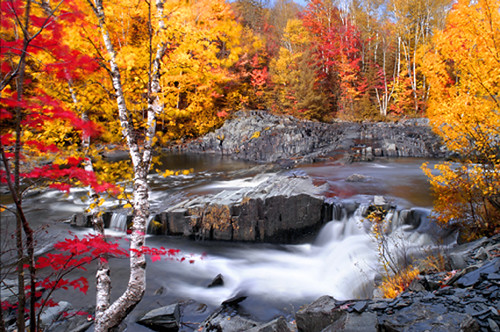By J Motes
Fishing in the rain is something that most people do not look forward to doing. Hank Williams Jr. summed it up pretty well when he sang, “…and I’m against fishing in the rain.” Fishing in the rain can be a miserable experience for the fisherman or fisherwoman, but unless it is a complete downpour or there is flooding, fishing in the rain usually beats most other times to fish.
One reason that fishing in the rain is so productive is that the rain drops break up the smooth surface of the water and thus reduces the penetration of light into the water. Fish that shy away from bright light will come out to feed. Also rain will wash insects and other food sources into the water. While small tributaries are always great places to fish, these areas are often more productive with the rain bringing even more food into the water.
To be out fishing in the rain for long and to not be comfortable, the fisherman needs to dress for the weather. In many places a fisherman can find a location to fish under a roof, a canopy of trees, or other shelter. If this is not possible a wide brimmed waterproof hat will suffice. Comfortable fishing also requires a dry seat. Those fishing from boats should bring along a piece of plastic or something similar to cover up your seat and a towel to dry it off. Those fishing from shore need to bring a hunter’s seat strapped to their belt to keep their hind end dry both while walking and sitting. A folding stool may work as well. If you are going to be sitting in the open while fishing in the rain, a large golf umbrella might be a big help. Waterproof shoes or boots are a must also to keep your feet dry. However, if it is quite warm, shoes that drain well will work well also. If you are going to wade in the rain I suggest wet wading (without waders). If you must wear the waders in the rain, a light jacket will help to keep rain from running into the waders, which can be quite annoying.
As far as the actually fishing, little changes in the rain. While a steady rain might make it difficult for fish to see top water flies and other lures, nothing else will change significantly from my experience. Do keep an eye out on changes in the water as rain will often cloudy the water and necessitate lure color changes.
Safety is another concern. Be aware of flash flooding when fishing in the rain. While the rain may be relatively gentle where you are, areas upstream may be getting a severe down pour. Lightning is another concern. No fish is worth getting struck by lightning, so stay off and away from the water when there is lightning. Footing will of course be more slippery in the rain, so watch your step.
While fishing in the rain can be frustrating and uncomfortable physically, the fishing itself is often quite good. One more reason to fish in the rain? You are often the only one there!










